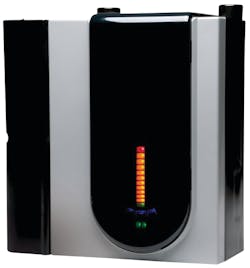Company integrates FAAST into product
St. Charles, IL – System Sensor has announced that its FAAST Fire Alarm Aspiration Sensing Technology is now listed to the European EN 54-20 standard for aspirating smoke detectors. This listing confirms that the FAAST detector has been independently tested by VdS inGermany to meet the standard. Compliance with the EN 54-20 standard is required for aspirating products to include the CE marking.
An important feature of this standard is its sensitivity classification system for aspirating smoke detectors. The standard divides sensitivities into one of three classifications for specific applications: Class A: Very high sensitivity for very early warning fire detection; Class B: High sensitivity for early warning of fires; and Class C:Normalsensitivity for general fire protection.
“One key benefit of EN 54-20 to designers and end users of aspiration systems is it eliminates any confusion about the settings required for listed detectors to achieve required sensitivity levels and alarm appropriately in fire conditions,” says Jeff Klein, Vice President of Marketing for System Sensor U.S. “This levels the playing field, as different detectors require different settings to achieve Class A, B, or C sensitivities. The FAAST detector has been confirmed by VdS in independent testing to meet requirements for all three sensitivity classifications using the published settings. Our European customers can replicate these settings for their own very early warning, early warning, and standard detection projects.”
Along with its ability to meet the full range of sensitivity classifications for EN 54-20, FAAST’s patented Dual Vision sensing technology and particle separation combine to provide the earliest and most accurate smoke detection available. FAAST’s unique combination of nuisance immunity and incipient fire detection opens up a world of application possibilities – even to protect many spaces deemed impossible for traditional detection technologies.


